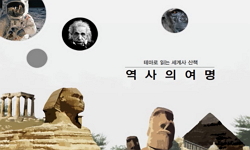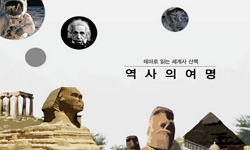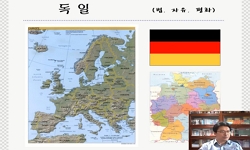Much part of the soldiers of thema (themata) in the Byzantine Empire is regarded to be indigenous, supported by their families, most of them being farmers, not necessarily however. They were called for duty whenever in need, returning home in winter a...
http://chineseinput.net/에서 pinyin(병음)방식으로 중국어를 변환할 수 있습니다.
변환된 중국어를 복사하여 사용하시면 됩니다.
- 中文 을 입력하시려면 zhongwen을 입력하시고 space를누르시면됩니다.
- 北京 을 입력하시려면 beijing을 입력하시고 space를 누르시면 됩니다.

비잔티움 제국의 군사조직과 사회구조의 변화 -테마제도의 변천을 중심으로- = A Shift of the Military and Social Structures of the Byzantine Empire: On the Mutation of Thema System
한글로보기https://www.riss.kr/link?id=A77026520
- 저자
- 발행기관
- 학술지명
- 권호사항
-
발행연도
2009
-
작성언어
-
-
주제어
비잔티움 ; Byzantium ; 테마 ; Thema ; Themata ; 군역 ; Strateia ; Military Service ; 토지보유 ; Land Holdings ; 금납화 ; Fiscalization
-
KDC
900
-
등재정보
KCI우수등재
-
자료형태
학술저널
-
수록면
37-64(28쪽)
-
KCI 피인용횟수
1
- 제공처
- 소장기관
-
0
상세조회 -
0
다운로드
부가정보
다국어 초록 (Multilingual Abstract)
Much part of the soldiers of thema (themata) in the Byzantine Empire is regarded to be indigenous, supported by their families, most of them being farmers, not necessarily however. They were called for duty whenever in need, returning home in winter and peace of time. The thema refered to army itself first, then to the area where the army stationed, and last to administrative area. The usage of thema for administrative area following the designation of army appeared in the 670s first time in the sources, while the words, `stratos` as well as `strateuma` was much more generally used for meaning army. The theses around themata are about when they came into existence, whether the recruitment of soldiers is related to holdings of land or alledged `military land`, etc. This essay do not concern with the origin of thema system, but just with the relation between the soldiers of thema and land holdings over the 7th to the 10th century, what political and sociological meanings a series of agricultural laws enacted in the 10th century have, and what meaning of historical context the fiscalization of military service has, The question about which of the two, person or land, military service was imposed upon could not be easily answered, as it did not follow to a uniformed norm but depended largely on confronted situations. Generally, active military service in person was more preferred by the Empire until the 9th century than later, and in the 10th and 11th centuries the fiscalization of military service got more intensified. As time passed on, the generals (strategos) as well as the soldiers of thema gradually lost significance and gave in to administrative bureaucrats and the mercenaries more mobile and more aggressive. With the development of thema system, the Empire enlarged the object of imposing military duty in person and in property. And this process has a close connection with intensifing governmental control and tax collection of the Empire, the tax referring to land (jugatio) as well as poll tax (capitatio) and household (kapnikon). A previlege of being exempted from a kind of particular tax was to be awarded to the common farmer, as he recorded in the military duty. The dissemination of military service to the peasant society coincides with the strengthening political power of the Empire itself, and the bureaucracy of thema and its breaking into parts. This process kept going on over the 7th to the 11th, 12th centuries. Moreover, the criminal laws of the Empire got inforced and more atrocious, too. Thus, the transition of the form of military service and the system of land holdings and taxation influenced not simply to military system, but generally to the governmental system of the Empire which permeated into the lowest stratum of society of farmers as well as the sphere of church. In short, the expansion of the military and then the administrative structure of thema made an opportunity of intensifing the subordination of farmers and ecclesiastical society to the military-administrative system of the Byzantine Empire.
참고문헌 (Reference)
1 김차규, "비잔티움 제국의 테마제도: 기원문제를 중심으로" 3 : 32-33, 1998
2 E.H. Kantorowicz, "비잔티움 제국의 봉건제" 234-235,
3 G. Ostrogorsky, "비잔티움 제국사"
4 한정숙, "비잔티움 제국사" 까치글방 1999
5 김차규, "레오 3세와 성상파괴논쟁" 10 : 126-, 1999
6 R. J. Lilie, "“‘Thrakien’ und ‘Thrakesion’: Zur Byzantinischen Provinzorganisation am Ende des 7 Jahrhunderts" 26 : 7-47, 1977
7 J. Haldon, "Warfare, State and Society in the Byzantine World"
8 F.I. Uspenskij, "Voennoe ustrojstvo vizantijskoj imperii" 6 : 154-207, 1900
9 G. Fatouros, "Theodori Studitae Epistulae" 61-63, 1992
10 D. Gorecki, "The strateia of Constantine VII : the Legal Status, Administration, and Historical Background" 82 : 1989
1 김차규, "비잔티움 제국의 테마제도: 기원문제를 중심으로" 3 : 32-33, 1998
2 E.H. Kantorowicz, "비잔티움 제국의 봉건제" 234-235,
3 G. Ostrogorsky, "비잔티움 제국사"
4 한정숙, "비잔티움 제국사" 까치글방 1999
5 김차규, "레오 3세와 성상파괴논쟁" 10 : 126-, 1999
6 R. J. Lilie, "“‘Thrakien’ und ‘Thrakesion’: Zur Byzantinischen Provinzorganisation am Ende des 7 Jahrhunderts" 26 : 7-47, 1977
7 J. Haldon, "Warfare, State and Society in the Byzantine World"
8 F.I. Uspenskij, "Voennoe ustrojstvo vizantijskoj imperii" 6 : 154-207, 1900
9 G. Fatouros, "Theodori Studitae Epistulae" 61-63, 1992
10 D. Gorecki, "The strateia of Constantine VII : the Legal Status, Administration, and Historical Background" 82 : 1989
11 P. Alexander, "The Patriarch Nicephorus of Constantinopli in: Ecclesiastical Policy and Image Worship in the Byzantine Empire" 117ff-, 1958
12 T.E. Gregory, "The Ekloga of Leo III and the Concept of Philanthropia" 7 : 267-287, 1975
13 J. C. Cheynet, "The Byzantine Aristocracy and its Military Function" 2006
14 J.F. Haldon, "The Arab-Byzantine Frontier in the English and Ninth Centuries: Military Organisation and Society in the Borderlands" 19 : 79-116, 1980
15 P. Lemerle, "The Agrarian History of Byzantium from the Origins to the Twelfth Century"
16 G. Ostrogorsky, "Sur la date de la composition du Livre des Thèmes et surl'époque de la constitution des premiers thèmes d'Asie Mineure" 23 : 55-, 1953
17 M. Gregoriou-Ioannidou, "Stratologia kai eggeia stratiotike idioktesia sto Byzantio" 4 : 62ff-, 1988
18 J.F. Haldon, "Some Remarks on the Background to the Iconoclast Controversy" 38 : 161-184, 1977
19 W.E. Kaegi, "Some Reconsiderations on the Themes : seventh-Ninth Centuries" 16 : 39-53, 1967
20 J.F. Haldon, "Recruitment and Conscription in the Byzantine Army c.550~950 : a Study on the Origins of the stratiotika ktemat" 357 : 1979
21 H. Ahrweiler, "Recherches sur l'administration de l'empire byzantin aux IXe-XIe siècles’" 84 : 12ff-, 1960
22 M. Grigoriou- Ioannidou, "Parakmi kai Ptosi tou Thematikou Thesmou" 111-,
23 Alexander P. Kazhdan, "Oxford Dictionary of Byzantium" 2034-2035, 1991
24 J. Haldon, "Military Service, Military Lands, and the Status of Soldiers: Current Problems and Interpretations" 47 : 1993
25 P. Oikonomides, "Middle Byzantine Provincial Recruits : salary and Armament in: Gonimos : Neoplatonic and Byzantine Studies presented to Leendert G. Westerink at 75" 1988
26 J. Howard-Johnston, "Maistor : Classical, Byzantine, and Renaissance studies for Robert Browning" Canberra 189-197, 1984
27 E. Patlagen, "L’impôt payé par les soldats in: Armées et fiscalité dan le monde antique" 303-309, 1977
28 A. Pertusi, "La formation des thèmes byzantins in: Berichte zum XI Internationalen Byzantinischen-Kongress" 33ff-, 1958
29 J.B. Bury, "History of the Later Roman Empire : From the Death of Theodosius I to the Death of Justinian" 1958
30 Scriptor Incertus, "Historia de Leone Armenii, Bardae filio, in Izbori zabulgarskata istorija, v. 8" 16-24, 1961
31 J. Haldon, "Esquisse pour un histoire agraire de Byzance" 219 : 37-24, 1958
32 R. J. Lilie, "Die zweihundertjärige Reform : Zu den Anfängen der Themenorganisation im 7 und 8 Jahrhundert" 45 : 27-39, 1984
33 R.J. Lilie, "Die zweihunderjärige Reform" 196f-,
34 R. J. Lilie, "Die Byzantinische Reaktion auf die Ausbreitung der Araber" 287-321, 1976
35 Miracula S. Georgii, "Das Drachenwunder des heiligen Georg in der griechischen und lateinischen Überlieferung" Leipzig 19-21, 1911
36 G. Ostrogorsky, "Byzantinische Grschichte 324~1453" 1996
37 J.F. Haldon, "Byzantine Praetorians: An Administrative, Institutional, and Social Survey of the Opsikion and Tagmata, c.580~900" 3 : 164-174, 1984
38 O.R.S. Lopez, "Byzantine Law in the Seventh Century and its Reception by the Germans and the Arabs" 16 : 445-, 1942
동일학술지(권/호) 다른 논문
-
- 한국서양사학회
- 송문현 ( Moon Hyun Song )
- 2009
- KCI우수등재
-
- 한국서양사학회
- 정영권 ( Young Kwon Chung )
- 2009
- KCI우수등재
-
- 한국서양사학회
- 김기순 ( Ki Soon Kim )
- 2009
- KCI우수등재
-
모아진 몸 -프랑스 제3공화국 인구감소 논쟁으로 본 푸코의 개인, 인구, 통치성-
- 한국서양사학회
- 오경환 ( Kyung Hwan Oh )
- 2009
- KCI우수등재
분석정보
인용정보 인용지수 설명보기
학술지 이력
| 연월일 | 이력구분 | 이력상세 | 등재구분 |
|---|---|---|---|
| 2022 | 평가예정 | 계속평가 신청대상 (등재유지) | |
| 2017-01-01 | 평가 | 우수등재학술지 선정 (계속평가) | |
| 2013-01-01 | 평가 | 등재 1차 FAIL (등재유지) |  |
| 2010-01-01 | 평가 | 등재학술지 유지 (등재유지) |  |
| 2008-01-01 | 평가 | 등재학술지 유지 (등재유지) |  |
| 2006-01-01 | 평가 | 등재학술지 유지 (등재유지) |  |
| 2005-10-08 | 학술지등록 | 한글명 : 서양사론외국어명 : The Western History Review |  |
| 2004-01-01 | 평가 | 등재학술지 유지 (등재유지) |  |
| 2001-01-01 | 평가 | 등재학술지 선정 (등재후보2차) |  |
| 1998-07-01 | 평가 | 등재후보학술지 선정 (신규평가) |  |
학술지 인용정보
| 기준연도 | WOS-KCI 통합IF(2년) | KCIF(2년) | KCIF(3년) |
|---|---|---|---|
| 2016 | 0.31 | 0.31 | 0.23 |
| KCIF(4년) | KCIF(5년) | 중심성지수(3년) | 즉시성지수 |
| 0.26 | 0.26 | 0.494 | 0.13 |




 KCI
KCI KISS
KISS







